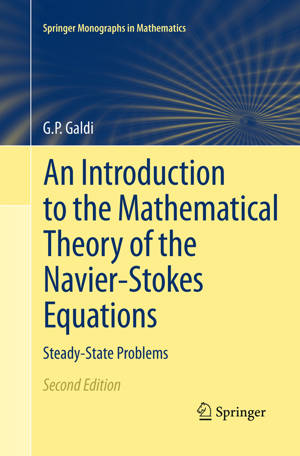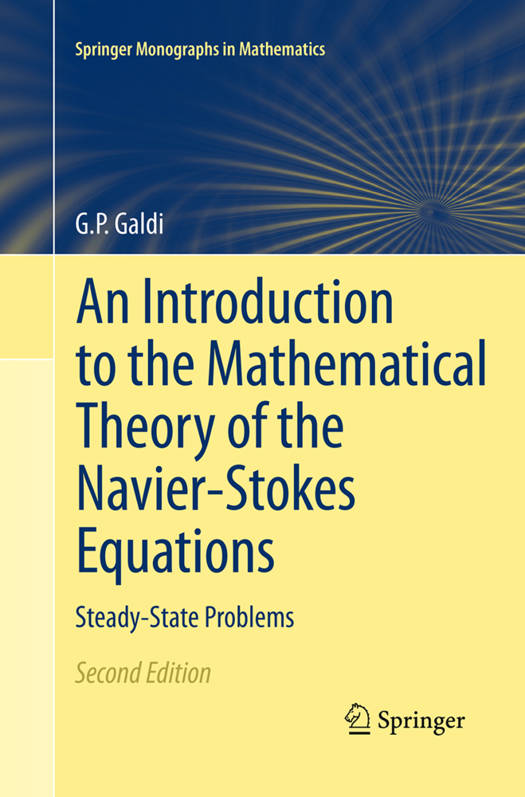
- Retrait gratuit dans votre magasin Club
- 7.000.000 titres dans notre catalogue
- Payer en toute sécurité
- Toujours un magasin près de chez vous
- Retrait gratuit dans votre magasin Club
- 7.000.000 titres dans notre catalogue
- Payer en toute sécurité
- Toujours un magasin près de chez vous
An Introduction to the Mathematical Theory of the Navier-Stokes Equations
Steady-State Problems
Giovanni Galdi
144,95 €
+ 289 points
Format
Description
The book provides a comprehensive, detailed and self-contained treatment of the fundamental mathematical properties of boundary-value problems related to the Navier-Stokes equations. These properties include existence, uniqueness and regularity of solutions in bounded as well as unbounded domains. Whenever the domain is unbounded, the asymptotic behavior of solutions is also investigated. This book is the new edition of the original two volume book, under the same title, published in 1994. In this new edition, the two volumes have merged into one and two more chapters on steady generalized oseen flow in exterior domains and steady Navier-Stokes flow in three-dimensional exterior domains have been added. Most of the proofs given in the previous edition were also updated. An introductory first chapter describes all relevant questions treated in the book and lists and motivates a number of significant and still open questions. It is written in an expository style so as to be accessible also to non-specialists.Each chapter is preceded by a substantial, preliminary discussion of the problems treated, along with their motivation and the strategy used to solve them. Also, each chapter ends with a section dedicated to alternative approaches and procedures, as well as historical notes. The book contains more than 400 stimulating exercises, at different levels of difficulty, that will help the junior researcher and the graduate student to gradually become accustomed with the subject. Finally, the book is endowed with a vast bibliography that includes more than 500 items. Each item brings a reference to the section of the book where it is cited. The book will be useful to researchers and graduate students in mathematics in particular mathematical fluid mechanics and differential equations. Review of First Edition, First Volume: "The emphasis of this book is on an introduction to the mathematical theory of the stationary Navier-Stokes equations. It is written in thestyle of a textbook and is essentially self-contained. The problems are presented clearly and in an accessible manner. Every chapter begins with a good introductory discussion of the problems considered, and ends with interesting notes on different approaches developed in the literature. Further, stimulating exercises are proposed. (Mathematical Reviews, 1995)
Spécifications
Parties prenantes
- Auteur(s) :
- Editeur:
Contenu
- Nombre de pages :
- 1018
- Langue:
- Anglais
- Collection :
Caractéristiques
- EAN:
- 9781493950171
- Date de parution :
- 23-08-16
- Format:
- Livre broché
- Format numérique:
- Trade paperback (VS)
- Dimensions :
- 156 mm x 234 mm
- Poids :
- 1415 g







